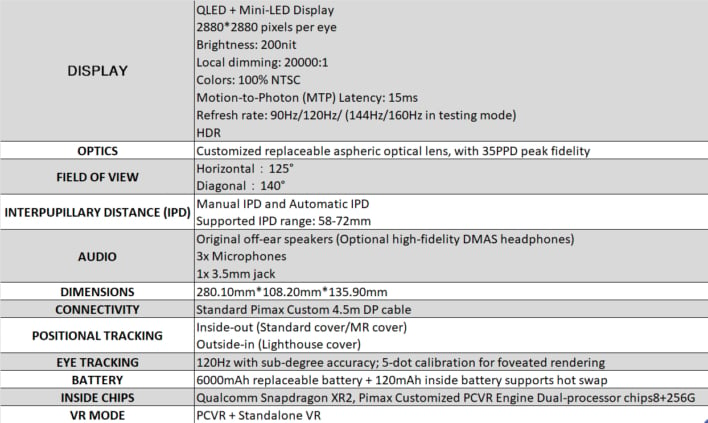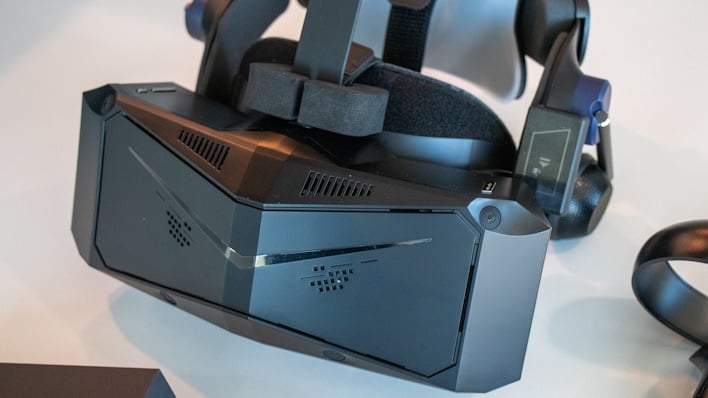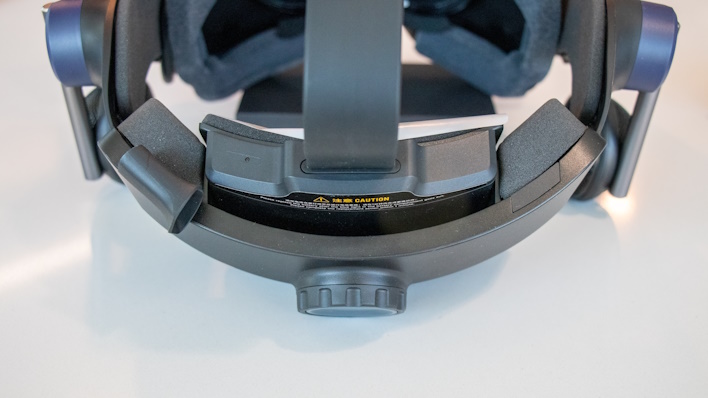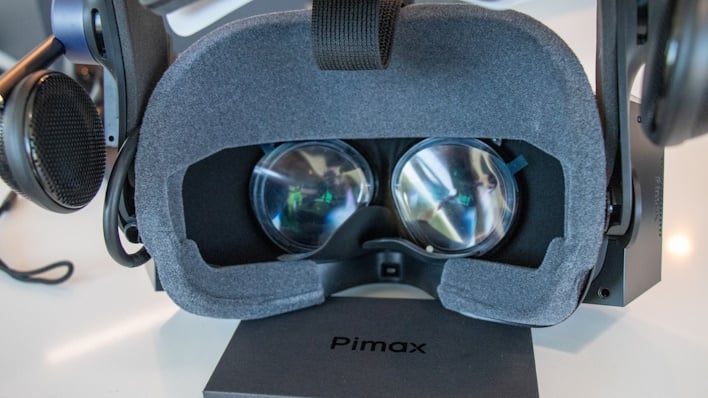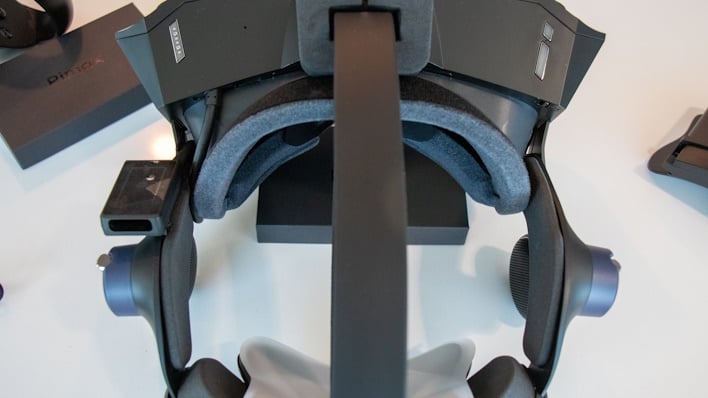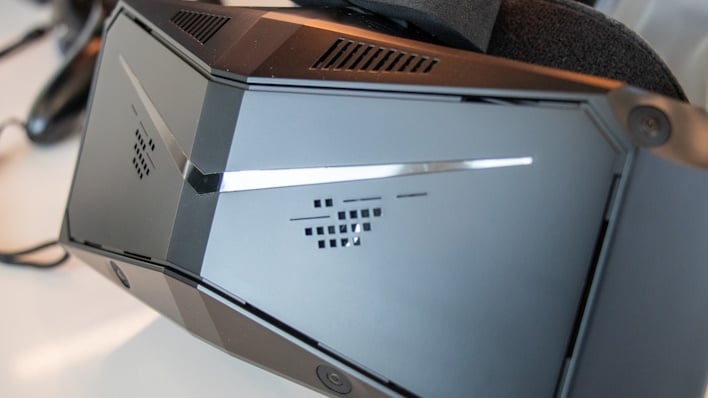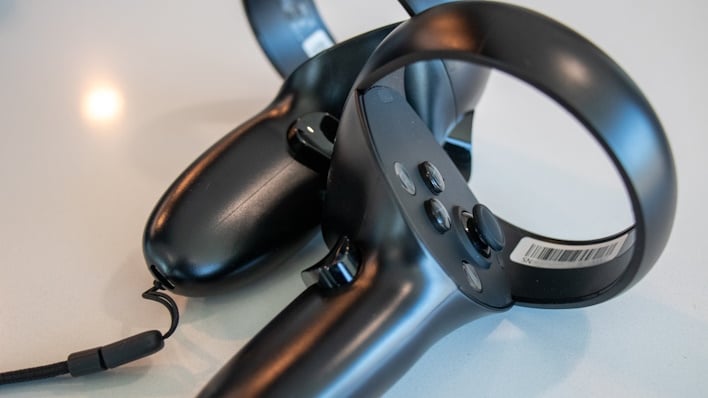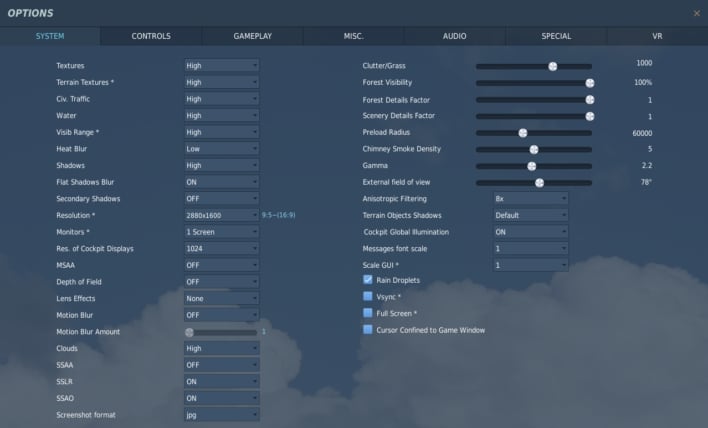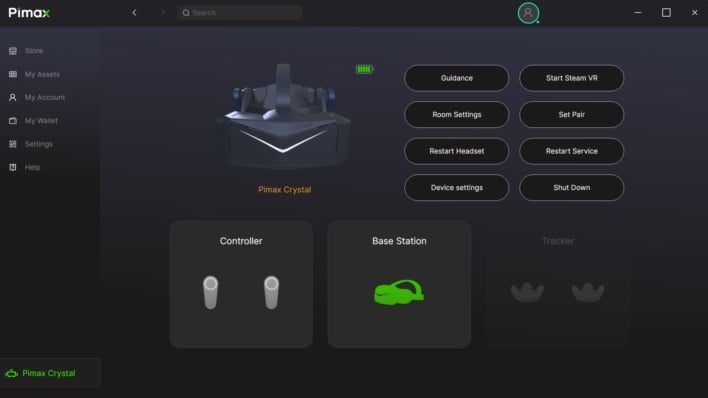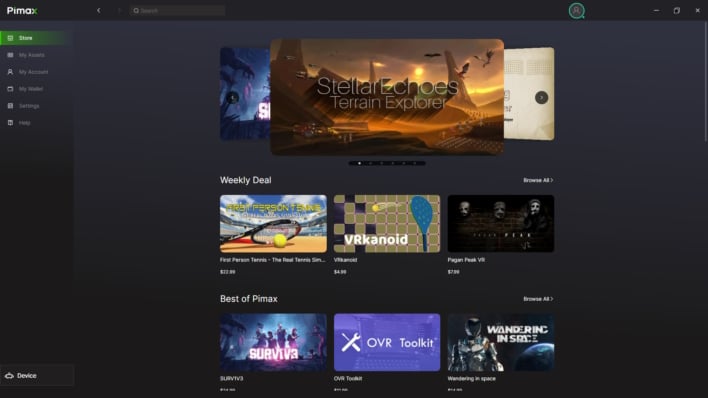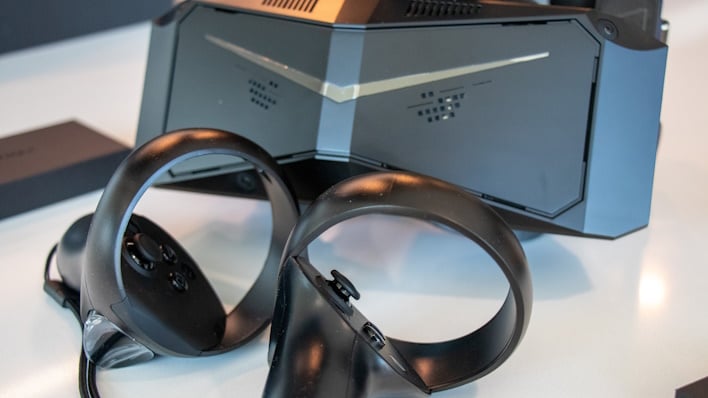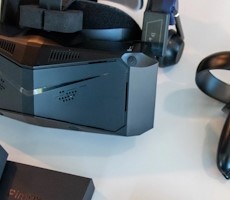Pimax Crystal VR Headset Review: High Res, High-End VR In Need Of Polish
Pimax Crystal: An Impressive Headset That Needs Some Polish
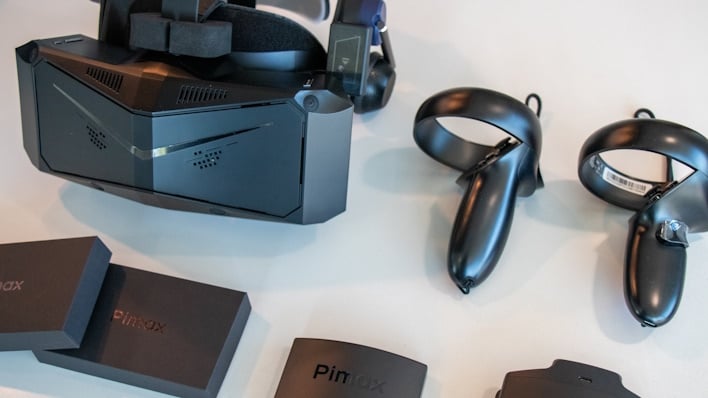
| Pimax Crystal VR Headset - $1,499.99 With $300 Coupon The Pimax Crystal is a very high-end VR headset for a premium experience, though it drops in at a high-end price and still needs refinement. |
|||

|

|
|
|
On paper, the Pimax Crystal is one of the most high-end VR headsets currently available on the market, boasting rather impressive displays and overall capabilities. However, all of that comes at a cost and performance hardware premium that many may find hard to justify. Despite this, if you are looking for a solid VR headset and can handle not only running the hardware but handling any of the high-end fiddling that comes with it, you should take a look at the Pimax Crystal. But first, run through our evaluation here to get better acquainted and see if this new VR gear is right for you.
Pimax Crystal Specs And Features
The Pimax Crystal’s claim to fame are its remarkably high pixel count displays with an impressive 5760x2880 total pixels on QLED + Mini LED panels that can run up to 120Hz refresh rate. Further, the Crystal also claims to have the highest pixels-per-degree of all VR headsets, at an admittedly impressive 35 PPD with a horizontal field of view of 125°. To put that in perspective, the Valve Index, and Meta Quest 3, which are widely considered to be a premier VR headsets, has a resolution of 2880x1600 and 2064x2208 total pixels, respectively, across two LCDs that can run up to 144Hz and 120Hz.While the Crystal outclasses the Index, Meta Quest 3 and other VR headsets on paper, with 2880x2880 pixels per eye, you are paying for this premium in more ways than one. The elephant in the room here is the cost at an eyewatering $1,599, which well outprices other VR/AR headsets, save for the Apple Vision Pro. Beyond that, you also must have the hardware to be able to drive those beefy displays well enough that you will not experience motion sickness while playing games. The bare minimum recommended specification for the Pimax Crystal is an Intel Core i5 12th Gen or AMD Ryzen 7 3700X processor or above, 16+GB of RAM, and anything that meets or beats an NVIDIA GeForce RTX 2070 level of GPU performance.
Pimax Crystal Build Quality And Design Features
If you can manage to get over those two hurdles, the Pimax Crystal is a very respectable headset, all things considered. Out of the box, you are met with a matte black plastic headset, which is then flanked by two halo-style controllers like those paired with other standalone VR headsets. With the headset in hand, one might first notice the interesting rear head plate, which has a fairly normal knob to tighten the headset down, but a bit of extra plastic and a weird band coming out of it. This is where one of two 6000mAh batteries that come with the headset is installed to power in either PC VR or standalone mode.Around the sides, if you sprung for the option, are Pixmax DMAS Earphones with 40mm drivers that push DTS audio. Then up front is the angular design, which incorporates four cameras for inside-out tracking and a swappable face plate allowing for Valve Lighthouse-based tracking instead of the standard inside-out. If you go for this upgrade, it will normally cost $200 more but is available at the time of this publication for only $100 more.
Inside the headset, one will see premium glass lenses, which are flanked by Tobii eye-tracking technology that allows for auto-interpupillary distance (IPD) adjustments, as well as dynamic foveated rendering, to increase overall game performance. There is also a switch to flip between PC VR and standalone VR modes in the upper right-hand corner of the inner face of the headset, which is quite convenient. Then, on top is a volume rocker, IPD adjustment rocker, and power button, which will get the headset booted up in whichever mode you need.
With everything set up, charged, and attached, the headset will weigh in at 960g or 2.11 lbs, which is a bit on the heavier side, truth be told. Despite the heft, it isn’t notably uncomfortable for prolonged use, but your mileage may vary here. In any event, with all of that out of the way, let’s dive into our hands-on experience with the Pimax Crystal.
Pimax Crystal VR Setup
Initially, the setup of the HMD was a little finicky as we followed the available Pimax quick start guide, which is easy. However, we did not realize that our test rig, comprised of an AMD Ryzen 9 7950X3D, NVIDIA GeForce RTX 4090, and 64GB of RAM, did not like having two connected displays as well as the Pimax Crystal thanks to GPU bandwidth issues. Once that problem was resolved by unplugging the secondary monitor, it was pretty smooth sailing.Besides hardware setup, we also had to install the Pimax Play app and some other things, which we will discuss in gameplay later. However, this proved to be easy enough and was pretty much a click-through setup with no real issues. Then, with the setup complete, we could finally dive into some VR content.
Pimax Crystal Real World Experience – Standalone Mode
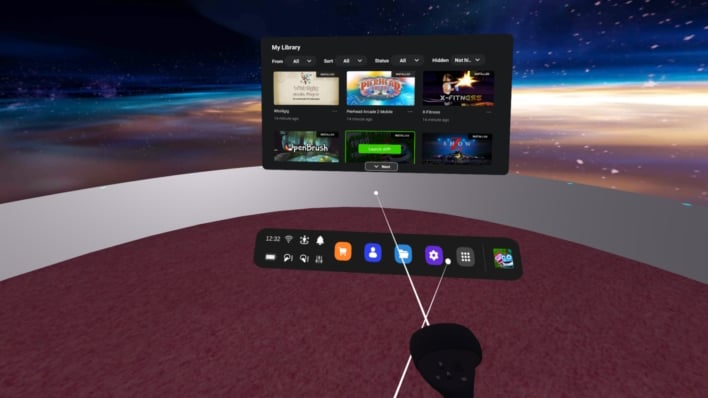
The in-VR interface for Pimax Crystal is decently easy to navigate and use.
What we did not really mention previously is that inside the Pimax Crystal is effectively a gaming Android device powered by the Qualcomm Snapdragon XR2 and paired with 8GB of RAM. This allows you to play a number of games or interact with apps without having to hook up to a PC. We did not spend all that much time in here as it works as one would expect a standalone headset to. However, it does feel like you are playing mobile games in standalone mode, given the framerate and overall gameplay, that feels a bit like a throwback to the Angry Birds era of gaming. Either way, it’s not a bad experience, just not where this headset shines.
Pimax Crystal Real World Experience – PC Mode Is Where It's At
Ultimately, driving PC gaming or VR experience is the bread and butter of the Pimax Crystal, which we can certainly confirm. The impressive displays yield nice clarity and detail compared to our baseline with the Valve Index. As a demanding game with close-range high detail, we pitted the Valve Index against the Pimax Crystal in Digital Combat Simulator (DCS) in an F-15C free-flight around the Nevada desert and Las Vegas itself.While the Valve Index did generally outperform the Pimax Crystal in our testing which is to be expected given the difference in resolution, it was closer than what some might think. In initial tests, the Pimax Crystal was consistently around 40FPS in SteamVR until we switched to OpenXR mode, as explained in an article on the Pimax site. Then, the Crystal was consistently sitting around 50 to 60 FPS, as you can see in our video above, with the occasional dip or spike, which is to be expected.
The Valve Index in SteamVR mode, of course, had higher framerates, around 120 FPS with minimal things on screen, which was then brought back down to around 70 FPS by flying between buildings in Las Vegas. Ultimately, with some tuning and perhaps game tweaks alongside ensuring foveated rendering is working as it should in the Crystal, the gap in performance between the two headsets could be significantly reduced. As previously alluded, none of this is too terribly surprising given significantly higher resolution of the Pimax Crystal.
Though DCS is not an end-all-be-all test for VR, it certainly stresses a system and lets a headset show both its strengths and weaknesses. As always, your experience may vary, based on your PC specifications.
Pimax Play App - Room For Improvement
Between both gaming experiences, we had to use the Pimax Play app to manage the headset, peruse the Pimax store, and troubleshoot any problems that came up. Having messed around for it for a few days, we can certainly say that the tool is not as polished as you might expect or as smooth as the SteamVR experience. In short, the Pimax Play app feels somewhat unpolished but that is not to say it is unusable. Ultimately, we would hope and expect to see Pimax continue to update the app so that it gets better with time.As for the store, you won't be finding any titles like Beat Saber, Blade and Sorcery, Superhot, or even Bigscreen. The same applies for the Pimax store in standalone VR mode, which has a different selection of what are effectively mobile games. In any event, do not expect to be picking up any games through Pimax directly as they are not likely to have the new hot titles that everyone wants to play in VR.
Though standalone games and apps are only available through the Pimax store, SteamVR games and other PC VR games can still be accessed and played on the Pimax Crystal, which is this VR headset's bread and butter.
Pimax Crystal VR Headset Experiences And Review Conclusion
At the end of the day, the Pimax Crystal is a really cool headset to tool around with that provides outstanding display quality. There was a little hassle in setup and overall, the Pimax Crystal does not feel fully polished in terms of build quality and software experience, though it is getting regular enough updates to alleviate some of that concern. The standalone VR headset mode also does leave some things to be desired, though, such as the content quality and quantity of content. However, if you are spending this much on a headset ($1499 currently, with a coupon box) and are expecting it to be a standalone device only, you are doing it wrong as they say, and should probably just look at one of Meta's products.
With that said, this is truly a PC VR headset, and it does decently at that, which we should expect for what it costs. We sadly didn't get to test the Lighthouse tracking or any of the wireless VR features that Pimax mentions on its website, though, so we'll have to circle back on that perhaps, in the days ahead. In any event, the Pimax Crystal does face stiff competition from other existing or potentially upcoming headsets, but it is certainly worth a glance if you are in the market for an impressive VR headset and don't mind dropping extra dollars for its price premium.




